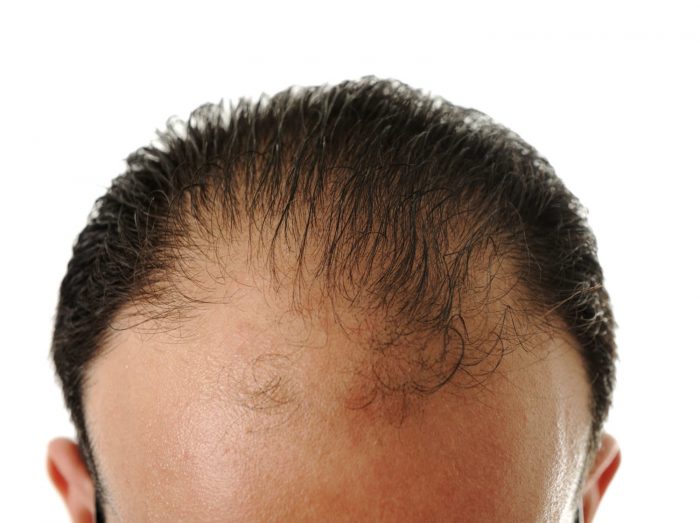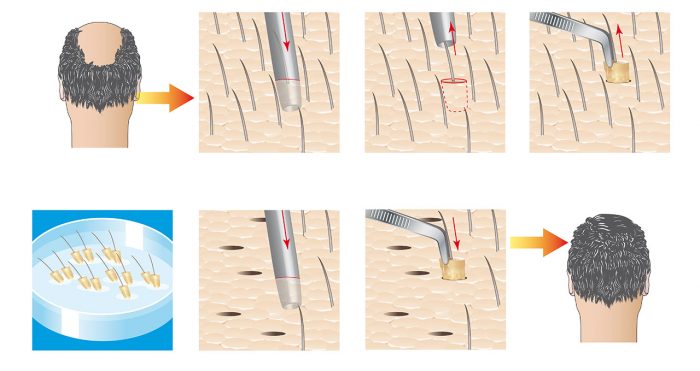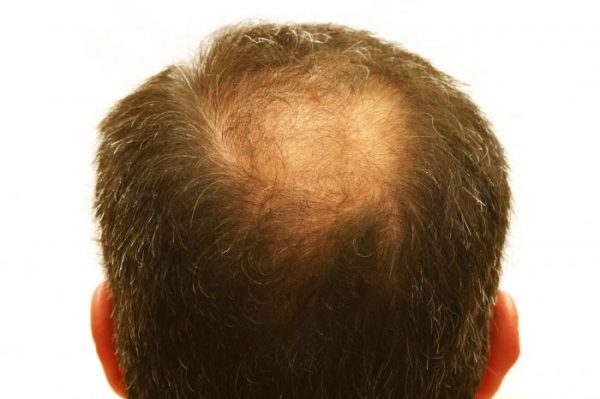ABOUT HAIR TRANSPLANT
A hair transplant is a surgical procedure which transplants hair from one area of the body to another. Hair transplantation is sought after by patients who are looking for a permanent, natural-looking solution to partial baldness.
Hair loss, also known as alopecia, can be caused by a number of factors such as male-pattern baldness, medication, radiation therapy, chemotherapy, and trauma to the hair. Hair loss can occur in both men and women and is not limited to age.
Hair transplantation can be used for various areas of the body such as the scalp, eyelashes, eyebrows, or chest hair. The most common area for hair transplantation is the scalp, which is popular among men with receding hairlines.
The procedure involves hair being taken from a donor site on the body, either follicle by follicle (FUE) or in skin strips (FUT strip harvesting), and these are carefully placed into the bald patch.
Recommended for
- Male pattern baldness
- Alopecia
- Receding hairlines
- Traction alopecia
- Trauma to the hair
TIME REQUIREMENTS
- Number of days in hospital: 1.
Overnight stay not required.
- Average length of stay abroad: 3 days.
Patients can usually fly afterwards, however the procedure may require several sessions.

COMPARE HAIR TRANSPLANT PRICES AROUND THE WORLD
| Country | Cost |
|---|---|
| Ireland | 7400€ |
| Spain | 5000€ |
| Thailand | 3558€ |
| Hungary | 2800€ |
| Mexico | 2685€ |
| Poland | 2481€ |
| Turkey | 850€ |
HOW TO FIND QUALITY TREATMENT ABROAD
BEFORE HAIR TRANSPLANT ABROAD
The patient will have a consultation with the surgeon ahead of the procedure, to establish an appropriate donor site and discuss the procedure.
HOW IS IT PERFORMED
The scalp is first cleaned and the donor site where the hair is being harvested from, will be injected with an anesthetic to numb the area before the extraction.
There are 2 different techniques which can be used for the extraction of the donor hair. The hair can be taken in strips, and this technique is known as strip harvesting, which is also known as FUT harvesting (follicle unit transplantation), or it can be taken follicle by follicle, which is known as FUE (follicle unit extraction), both of which involve using a hollow needle.
The donor site is often at the back of the head, and any scarring from the incision can be concealed with hair.
These hairs are usually clipped to 1 to 2 mm in length, and implanted into the recipient site. Once the transplantation is complete, the area may be dressed with a surgical dressing which will need to be kept in place for 1-2 days.
At the recipient site it can sometimes take 4 to 6 months for the hairs to come through, and patients may have to wait up to one year to see the full effects of the transplant.
Anesthesia
Local anesthetic.
Procedure duration
The Hair Transplant takes 4 to 12 hours.
The procedure is time consuming, and a large number of transplants may take 8 hours or more. Sometimes, an extra appointment will be necessary.

WHAT TO EXPECT AFTER HAIR TRANSPLANT
Post procedure care
Patients will normally go back to their hotel after the transplant, and should rest with the head slightly raised. The doctor may recommend special shampoo to clean the head. Patients may experience itching.
The first transplanted hairs may fall out gradually over the first few weeks, and this shouldn’t be a cause for concern. Over time, new hairs should grow from the transplanted follicles.
Possible discomfort
There is only minor discomfort associated with this procedure. Most patients are comfortable with over-the-counter painkillers for the first day after surgery.
IMPORTANT THINGS TO KNOW ABOUT HAIR TRANSPLANT
Not recommended for
- Diffuse pattern female balding
- Alopecia areata (spot baldness)
- If there is insufficient hair at donor site
Potential risks
- Hair transplant failure (hair doesn’t grow)
- Obvious scarring (sometimes with strip harvesting a line is visible)
- Infection
- Swelling
- Tenderness on the scalp
FREQUENTLY ASKED QUESTIONS
Many hair transplant methods have a high rate of success. After care is very important in ensuring the results are what you expect. Overall, hair transplants have a success rate over 95%.
Hair transplants are a permanent solution for hair loss. Again, after care is essential in making sure the results are up to your expectations.
Hair transplants are very safe procedures with a minimal risk of side effects.
A local anesthetic will be used during the procedure, so you won’t feel any pain. Most patients report itching, swelling, and minor inflammation for a few days after the procedure, but no significant pain. Any discomfort is usually easily treated with an NSAID pain reliever such as ibuprofen. Patients who receive a large number of implants (called “mega sessions”) are likely to experience more discomfort.
Hair transplants are natural hair and will grow normally after the implant is completely assimilated. It may take up to a year before transplanted hair grows normally, but it will eventually be indistinguishable from normal hair. Many patients choose to wear a hat initially, and it is normal for the hair to fall out after transplant. As long as the follicles remain, these should grow new hairs in time.
How realistic transplanted hair looks depends largely on the skill of the surgeon. During the consultation before surgery, it’s important to ask questions so you can get realistic expectations for how the implants will look afterwards. After 1 year, most patients are very satisfied with how real the results look. Patients may be concerned about scarring at the donor site, particularly with strip harvesting, and ensuring a natural shape of the new hairline, however a good surgeon will be able to create a natural look.











